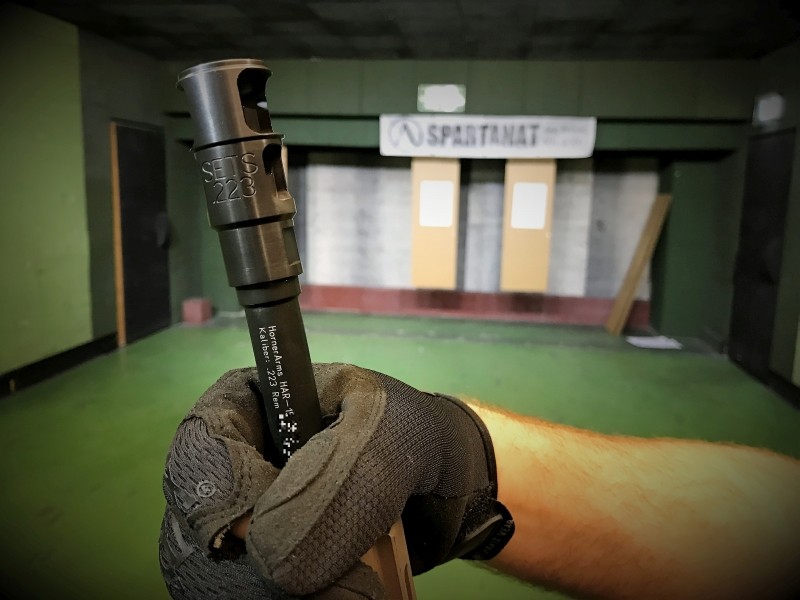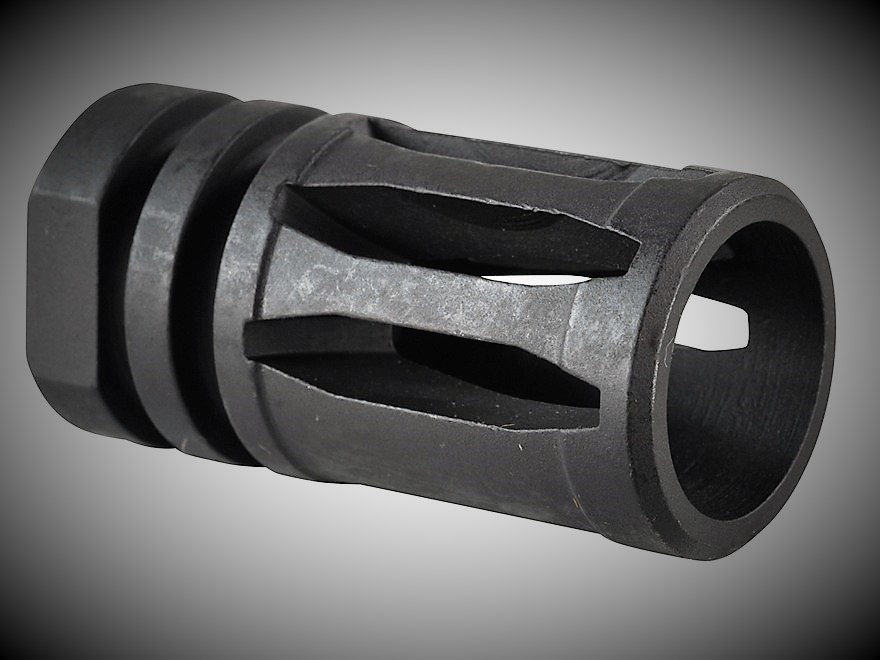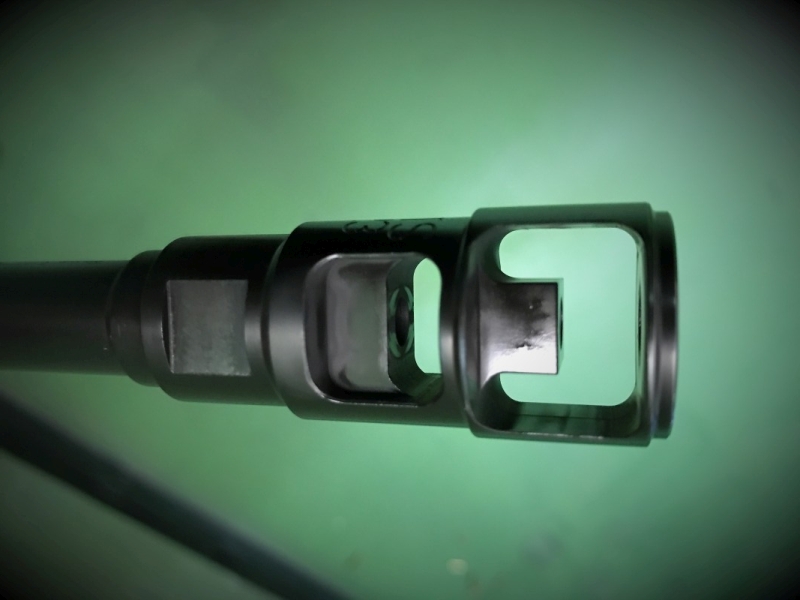Get the weekly SPARTANAT newsletter.
Your bonus: the free E-Book from SPARTANAT.

REVIEW: SETS Compensator .223
An often underestimated accessory on a rifle is found at the front end of the barrel. The short piece with holes or slots - what is it and what does it do? Here we distinguish between flash suppressors, muzzle brakes, and compensators, with some combined parts as well. The military usually uses flash suppressors, also known as flash hiders, which were already used in World War II. The purpose was and is to "hide" the telltale muzzle flash, which can quickly locate the enemy. The classic among flash hiders is the M16 Birdcage, which is still commonly seen today. With shorter guns came the muzzle brakes and compensators: Both serve to improve shooting behavior. While the brake reduces the recoil backward and is used for large-caliber weapons, the compensator is meant to counteract the upward movement of the barrel. The market is vast and every company offers the "best" one, which is why we do not want to make comparisons, but we do want to draw your attention to a small company from a small country.
With shorter guns came the muzzle brakes and compensators: Both serve to improve shooting behavior. While the brake reduces the recoil backward and is used for large-caliber weapons, the compensator is meant to counteract the upward movement of the barrel. The market is vast and every company offers the "best" one, which is why we do not want to make comparisons, but we do want to draw your attention to a small company from a small country.
 To be exact: Switzerland. This is where the compensator we tested comes from. The company that manufactures it is called SETS Group AG and, in addition to compensators for various calibers (more on that later), also offers buffer tubes, carbon forends, and gun tuning.
To be exact: Switzerland. This is where the compensator we tested comes from. The company that manufactures it is called SETS Group AG and, in addition to compensators for various calibers (more on that later), also offers buffer tubes, carbon forends, and gun tuning.
It does not have a flowery name, just the company name followed by the word compensator. What lacks in creativity in the naming, makes up for a well-thought-out construction. The SETS compensator was designed on the computer using CAD, with an additional module for calculation which promises about 20% better performance than the rest of the market, according to the manufacturer.
The compensator consists of two chambers through which the bullet must pass. The exiting gases are directed sideways to stabilize the shot and bring the barrel back down after the shot, or even prevent it from breaking out upwards in the first place.

You can get the compensator for the following calibers:
.223 Threads: ½“ 28 / M14x1 / M15x1
.308 Threads: 5/8“ 24 / M15x1 / M18x1
.338 Threads: M18x1 / M20x1
6.5 Creedmoor Threads: 5/8“ 24
Also available for 7.62×39, 7.62×54, .300 WM, and .300 AAC in the standard threads ½“ 28 / 5/8“ 24 / M141 and M1x1, as well as other threads upon request.
The processing of the compensator is top-notch, everything is clean and fine as it should be. So we take the part and screw it onto our AR15 platform. Our test compensator came in .223 caliber and we were very curious to see what awaited us - Matthias Horner from Horner Arms (http://www.hornerarms.de/) had spoken highly of the compensators.
It quickly becomes clear at the shooting range: The SETS compensator did not promise too much. It does an extremely good job and turns the shooting behavior of an AR15 in .223 into what feels like a .22. Rapid follow-up shots are no problem with this compensator, as the barrel remains almost on a constant line, thus not requiring much of a new target picture to be taken. In the video, we deliberately stood rigidly still to demonstrate the forces at work - you can see that there is hardly any movement.
However, the escaping gases to the sides may not be very pleasant for fellow shooters on the range: The SETS blows quite strongly to the right and left - that should be taken into consideration.

CONCLUSION: We liked the SETS compensator so much that we decided to keep it. Especially with rapid firing sequences, it unleashes its full potential and shows what it can do.
The SETS compensator is available from Horner Arms in Germany for €185 for .223 caliber and €205 for larger calibers.
We would like to thank Horner Arms and the Schießsportcentrum Heusenstamm for providing the facilities.
IWA March 3-6, 2017 - Hall 7A 512 and 508
Visit IWA online at www.iwa.info
SPARTANAT is the online magazine for Military News, Tactical Life, Gear & Reviews.
Send us your news: [email protected]
Ad
similar
Get the weekly SPARTANAT newsletter.
Your bonus: the free E-Book from SPARTANAT.


